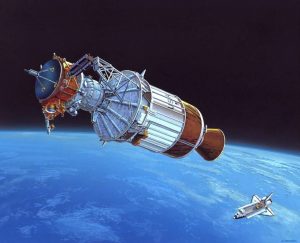- This topic is empty.
-
AuthorPosts
-
25/08/2025 at 15:05 #5584
In modern industrial production, air compressors, as essential power equipment, are widely used in manufacturing, construction, food processing, pharmaceuticals, and electronics. Stable compressor operation is directly related to production efficiency and product quality. Belt-type air compressors are a common choice for businesses due to their simple structure, smooth transmission, and easy maintenance. However, any equipment, if not properly maintained and maintained, can easily suffer from reduced efficiency, frequent failures, and even downtime over the long term. This article will detail key maintenance points and methods for belt-type air compressors to help businesses extend equipment life and improve operational efficiency.
1. Why is it important to maintain belt-type air compressors?
Belt-type air compressors use a motor to drive a pulley, which in turn drives the compressor's main unit to produce compressed air. The belt plays a critical role in this transmission process. Over time, the belt will wear, loosen, or even break. The compressor's lubricant, filters, and cooling system also require regular inspection and replacement. Improper maintenance can lead to the following problems:
Belt slippage or breakage: This can result in insufficient output air pressure and even equipment downtime.
Overheating: This can be caused by poor lubrication or a clogged cooling system, potentially burning out the motor or damaging parts. Air pollution: Aging filtration systems allow dust, moisture, or oil to enter the air path, impacting the quality of end equipment and products.
Increased energy consumption: Component wear reduces compression efficiency and increases power consumption.
Shortened equipment life: Lack of routine maintenance accelerates component wear and increases repair costs.
Therefore, effective maintenance not only reduces operating costs but also ensures the compressor maintains efficient and safe operation for extended periods.
2. Maintenance Key Points for Belt-Type Air Compressors
2.1 Inspection and Maintenance of the Belt System
The belt is the core transmission component of the compressor. During maintenance, pay attention to the following points:
Check the belt tightness: Too loose will cause slippage, while too tight will increase bearing load. Generally, there should be 10-15mm of elasticity at the center of the belt pressure.
Regular adjustment or replacement: Depending on frequency of use and environmental conditions, it is recommended to inspect the belt for wear every 1000 hours. Any cracks or hardening should be replaced promptly.
Keep the pulleys clean: Oil or dust on the pulley surface can easily cause slippage or wear, so they should be cleaned regularly. Replace belts as a set: If a compressor uses multiple belts, replace them as a set to avoid uneven tension due to varying degrees of wear.
2.2 Lubrication System Maintenance
Lubricating oil reduces friction, removes heat, seals, and prevents rust. Maintenance tips are as follows:
Regularly change the lubricating oil: Generally, change it after 500 hours of operation, and every 2,000 hours or three months thereafter.
Check the oil level: A low oil level will result in insufficient lubrication, while a high oil level will increase oil consumption and affect air quality.
Choose the appropriate oil: Use the manufacturer's recommended compressor oil. Avoid mixing or using inferior oils.
Keep the oil line clear: Regularly inspect the oil filter and oil lines to prevent blockage.
2.3 Filtration System Maintenance
Compressors are typically equipped with an air filter, oil filter, and oil-air separator. These components directly affect air cleanliness.
Air filter: Check every 500 hours and clean or replace if dust accumulation is detected.
Oil filter: Replace regularly to prevent impurities from entering the lubrication system. The oil-gas separator should be inspected and replaced after 2000 hours of operation to ensure the oil content in the compressed air remains within a reasonable range.
2.4 Cooling System Maintenance
Belt-type air compressors generate a significant amount of heat during operation, so the cooling system must maintain efficient operation.
Water-cooled models: Check the cooling water flow and quality to prevent scale buildup and clogging.
Air-cooled models: Regularly clean the heat sink and ensure proper operation of the cooling fan.
Preventing High-Temperature Shutdowns: If the ambient temperature is too high, improve ventilation or add auxiliary cooling equipment.
2.5 Electrical System Maintenance
Check the motor wiring to prevent motor overheating due to poor contact.
Regularly check the current and voltage to prevent motor overload.
Control System Maintenance: Ensure that devices such as the pressure switch, thermostat, and automatic drain valve are sensitive and reliable.
3. Recommended Maintenance Cycles for Belt-Type Air Compressors
To better guide businesses in developing maintenance plans, the following schedule may be a reference:
3.1 Daily Maintenance
Check the oil level for normal operation.
Observe operating sounds and temperatures, and immediately shut down the machine for inspection if any abnormalities are detected. Drain condensate from the air tank and pipes.
3.2 Weekly Maintenance
Check belt tension and wear.
Clean the air filter.
Check the oil circuit and cooling system for leaks.
3.3 Monthly Maintenance
Check electrical connections for tightness.
Measure operating current for normal operation.
Check the condition of the oil filter and oil-gas separator.
3.4 Quarterly Maintenance
Replace the lubricating oil and oil filter.
Check the cooling system for blockage or scaling.
Calibrate the safety valve and pressure switch.
3.5 Annual Maintenance
Replace all wearing parts (belts, filters, oil-gas separator).
Check the motor insulation.
Perform a thorough cleaning and inspection of the compressor main unit.
4. Precautions for Belt-Type Air Compressor Maintenance
Strictly follow shutdown procedures: Always disconnect the power supply before performing maintenance to ensure the equipment is in a safe state.
Use genuine parts to avoid equipment failures due to quality issues.
Avoid excessive maintenance: Frequent disassembly and assembly may cause additional wear and tear. Maintenance should be scheduled appropriately based on operating time and environmental conditions. Record maintenance information: Establishing a maintenance file helps track equipment status and develop optimization plans.
Maintain a clean environment: Compressors should be placed in a well-ventilated, dust-free environment to reduce external contamination.
5. The Relationship Between Maintenance and Energy Saving
Many companies believe that maintenance is simply about extending lifespan. In fact, effective maintenance can also help save energy and reduce consumption. For example:
A loose belt increases energy consumption; timely adjustment can save electricity.
Regularly replacing air filters reduces compressor intake resistance and improves compression efficiency.
Maintaining a healthy lubrication system reduces friction loss and extends component life.
gular maintenance not only ensures smoother operation of belt-type air compressors but also reduces energy costs, improving overall business profitability.
6. Conclusion
Belt-type air compressors are widely used in industrial production due to their economical and practical nature. However, effective maintenance is crucial for long-term, efficient operation of equipment. From the belt system to the lubrication system, from the filtration system to the cooling system, every aspect must be carefully considered. Companies should establish a comprehensive maintenance system, perform regular inspections and maintenance, and make adjustments based on actual operating conditions. This not only effectively extends equipment lifespan and reduces failure rates, but also improves production efficiency and reduces operating costs. For businesses, maintaining a belt-type air compressor is an investment in the stability and future of production. Only by paying attention to maintenance during daily operation can the compressor remain in optimal working condition and provide a reliable air source for production.
As a professional belt-type air compressor supplier, Gaoling leverages years of industry experience and advanced production technology to provide customers with high-quality, stable compressors. Whether in industrial production, construction, food processing, or power equipment maintenance, Gaoling's air compressors can meet the needs of various working conditions. The company also provides comprehensive after-sales service and maintenance guidance to help customers maintain their equipment effectively, extend its service life, improve operational efficiency, and ensure continuous and stable production.
http://www.glcompressor.com
glcompressor -
AuthorPosts
- You must be logged in to reply to this topic.


